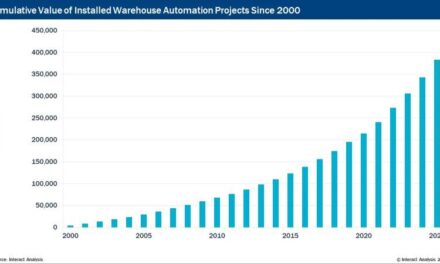 TOX® PRESSOTECHNIK delivered 333 pneumohydraulic drives to the Korean chemical giant LG Chem. The largest single order for TOX®-Powerpackages in the company’s history also was a technical masterpiece: TOX® PRESSOTECHNIK designed the pneumohydraulic drives as customised special versions for battery cell production.
TOX® PRESSOTECHNIK delivered 333 pneumohydraulic drives to the Korean chemical giant LG Chem. The largest single order for TOX®-Powerpackages in the company’s history also was a technical masterpiece: TOX® PRESSOTECHNIK designed the pneumohydraulic drives as customised special versions for battery cell production.
 The powerful drive cylinders of the TOX®-Powerpackage series generate large press forces in a very tight space, offer high stroke frequency and long service life with low energy consumption, low noise emission and minimum maintenance costs. These advantages also impressed LG Chem Ltd. The Korean chemical company ordered 333 special version drives for its battery cell production. Amongst others, the TOX®-Powerpackages are used for the pressing of film onto the battery cell without the formation of bubbles.
The powerful drive cylinders of the TOX®-Powerpackage series generate large press forces in a very tight space, offer high stroke frequency and long service life with low energy consumption, low noise emission and minimum maintenance costs. These advantages also impressed LG Chem Ltd. The Korean chemical company ordered 333 special version drives for its battery cell production. Amongst others, the TOX®-Powerpackages are used for the pressing of film onto the battery cell without the formation of bubbles.
TOX® PRESSOTECHNIK GmbH & Co. KG designed all attachment parts and components completely free from copper, nickel and zinc to prevent short circuits. The company produced more parts according to specifications in stainless steel. The TOX®-Powerpackages are suitable for dry rooms and provide 61.7 kilonewton press force at 6 bar pressure. The total stroke amounts to 100, the power stroke six millimeters.
 Practical additional functions
Practical additional functions
The special versions are equipped with practical additional functions, such as hydraulic end position damping of type ZHD for optimum damping of the working piston at the end of the return stroke. This tool-saving function is recommended particularly for applications with high tool weight or high stroke speeds. Furthermore, the drives are equipped with a pneumatic spring as well as a power bypass. It prevents negative pressure in the oil system during punching or during high stroke speeds.
The pneumohydraulic TOX®-Powerpackages are available in different designs and with comprehensive accessories. With press forces of up to 2,000 kilonewton they can thus be used universally as complete drive systems. They can be installed in any position and usually do not require external tool guidance.



